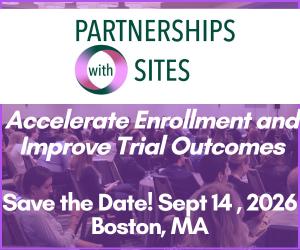How Duke University is Supercharging Patient Enrollment
Michael Musty explains how Duke University engages patients about clinical research through different layers of technological and personal interactions. Mr Musty is the Director of the Duke CTSI Recruitment Innovation Center (RIC).

What is the work you’re leading in recruitment innovation?
I work for the Duke Clinical Translational Science Institute’s Recruitment Innovation Center, and our charge is to help recruitment across the whole enterprise at Duke. RIC is trying to help study teams identify, engage and enroll participants more efficiently and effectively. We can help them design and personalize studies to find the right population. We can introduce them to different players in the field that help them connect to the right resources, as well as supply sound strategies for getting the recruitment goals.
Right now, what are the common ways that patients are getting connected to trials?
At Duke, there are many ways to find a trial. The first way would be simply searching in Google, and that’d be the first hit: the Duke Clinical Trials Directory. They can search by disease status, oncology or non-oncology, etc: there are about 30 or more different criteria that they can search within it to narrow down the results and have a direct line to the study team if they are interested. It’s similar to ClinicalTrials.gov, but not so steeped in lingo and science. It’s generally written for an eighth grade – or below – level.
Other ways can include a study team identifying potentially eligible participants and reaching out to them through letters, MyChart messages, phone calls, emails, etc. to try to initiate contact, , and meeting them in the clinic for an appointment or arranging a time for them to come in and discuss the study.
We can also reach out through the electronic medical record. While we use Epic at Duke, we have a homegrown search function called DEDUCE, as well as Epic products like SlicerDicer.
We have a dedicated team for MyChart messages to be sent directly to the patients. We are piloting a program through a third-party vendor called Xealth.
The original purpose of Xealth was to present videos to patients needing digital care, such as how to dress a wound or how to manage diabetes, but we are piloting a recruitment tool using videos or other multimedia to reach out to patients directly in Epic.
How is a potential trial match identified through MyChart? Is there an algorithm or is it through human action?
Each study requires an algorithm: it takes the inclusion/exclusion of the study, and whatever fields are entering the medical record, you put the limits around that as a filter and narrow it down. You can get to the high 90% eligibility for most studies at that point.
Some studies may be a little challenging, because what they’re looking for may be in a free text field or in a scan, for example there may not be a text field but may be just right on the scan.
The MyChart messaging service is governed by a board that. For example, a team will want to be sensitive about sending information for studies for pregnant women, because there may be a gap in time when an invitation goes out and a pregnancy is lost. There may be patients who are on the cusp of diagnosis that a team would like to work with in a study, but they may need to be careful about the wording so as not to divulge anything sensitive or imply a diagnosis. The Recruitment Innovation Center helps the study teams write their messages, in a lay-friendly, low-scientific level.
In the modern day, even though this technology is available to everybody at Duke, recruitment still has to have layers. You have to send letters, if you want to get certain populations who are not tech-savvy or on MyChart or have no access to WiFi. You have to call some folks because they do not open their mail. There are many issues that even though we have the technology, there still should be that patchwork of many layers of recruitment.
"I’ve found that the closer you get to the human touch, that is the more personal the method is, the better the chance of success."
What is the general level of receptiveness to participation in clinical research?
We’re not in the market to convince; we’re just here to be clear, open and easy to understand. I’ve found that the closer you get to the human touch, that is the more personal the method is, the better the chance of success. Talking to a person face–to-face is always better than a random message being sent to some account that may or may not be active, and can be easily deleted, forgotten, or never seen. The human touch is always best, but these multiple layers must be implemented to get successful recruitment.
The RIC has placed an emphasis on equity and diversity within recruitment. How does that inform innovating clinical trial matching?
Studies have shown that minority and underserved populations are usually willing to participate in studies. They are willing to participate and it’s just a matter of presenting it to them. Number one, they have to be aware of it. Number two, they have to be presented in a way that is comfortable to them; preferably using simple language, from a source they trust and in their native language. For example, Durham has a sizable Spanish-speaking population, so we have been recommending study teams to add Spanish-language consent forms and materials overall.
We recognized a great need for a bigger push to include diverse communities, and formed a dedicated center: Center for Equity in Research within the CTSI that helps the different functions within our large group and across Duke to increase the equity overall in research. Even when research is not related to minority health or health disparities, recruiting people from diverse racial, ethnic and other marginalized groups significantly enhances generalizability, improves population health, and ultimately advances research and health outcomes for all participants.
"Even when research is not related to minority health or health disparities, recruiting people from diverse racial, ethnic and other marginalized groups significantly enhances generalizability, improves population health, and ultimately advances research and health outcomes for all participants."
What are the challenges in the work you’re doing with recruitment and trial-matching?
The biggest challenge is the status quo. Many investigators have been using their exact methods for their whole careers. Coordinators also may have done their exact same methods, and they are probably doing okay, but they may not be thinking, “Maybe I could do better,” or “Maybe I could be more inclusive or more efficient.” Status quo is always an issue that has to be fought. We strive to help study teams ask the right questions about their methods, while also introducing alternatives or enhancements to their recruitment.
Another one is the regulatory burden, not just with Duke, but other institutions as well. The regulatory burden grows every year and that really adds time in a study before getting down to the actual enrollment. A team often can spend more time preparing for a study than actually running the study.
We are trying to focus on having an upstream strategy: trying to reach study teams as early in the grant process.
Rather than just finding teams in need of recruitment help after they are already behind by five months or no participants enrolled in the first several months, upstream we can try to influence how investigators write the grant and figure out if what they’re proposing is doable or if there is too much burden on the participant.
Many funded proposals are not great at translating to an actual working study with human beings on all sides recruiting, enrolling and being a part of the study. Investigators writing for study funding are trying to impress the people who approve the grant, but not always getting the input from the community. We advise that investigators obtain input from stakeholders from the community in the area, but also the community you want to enroll, is key and not sufficiently done well overall.
What would you like to see in the next 3-5 years in terms of optimizing trial matching?
I would like to see a personalized, portable Electronic Medical Record, so a patient can carry their medical record from institution to institution. A patient can ‘own’ their own data and can connect with research as they fit. They can move across providers and institutions for their care and research participation with their complete medical record. Identification of research cohorts may become easier and cost-effective and research can be more inclusive for participants at organizations with limited EMR capabilities.
"I would like to see a personalized, portable Electronic Medical Record, so a patient can carry their medical record from institution to institution. A patient can ‘own’ their own data and can connect with research as they fit."
What would you like to see from teams designing trials early on that would have benefits for recruitment and trial matching?
The number one issue is budgeting. There is always pressure to reduce budget in order to receive funding During the course of applying for a grant, there is seemingly always a prerequisite to chop off X amount of dollars, and usually that comes out of the recruitment budget first. The largest issue we see in our consultations is the lack of money for staffing, recruitment strategies, and adequate compensation.
Many studies could probably be simpler in design. There is a lot of burden on participants, and a lot of it is unnecessary. Scope creep, where investigators may add numerous tests and procedures for minor interesting questions that may not be really central to the study design, can make studies so burdensome that patients do not want to enroll.
How do you avoid that and create something that patients want to participate in?
The main thing that is really lacking is community and stakeholder input. Many problems could be solved by presenting what you would like to do in a certain study to the community. Instead of, “Hey, I built this. Come join me,” it should be “Let’s build this together.” If we can build studies together with the population that will be participating, it would be more successful on all sides.
For more information on CRAACO: Clinical Research as a Care Option, visit CRAACOevent.com.







